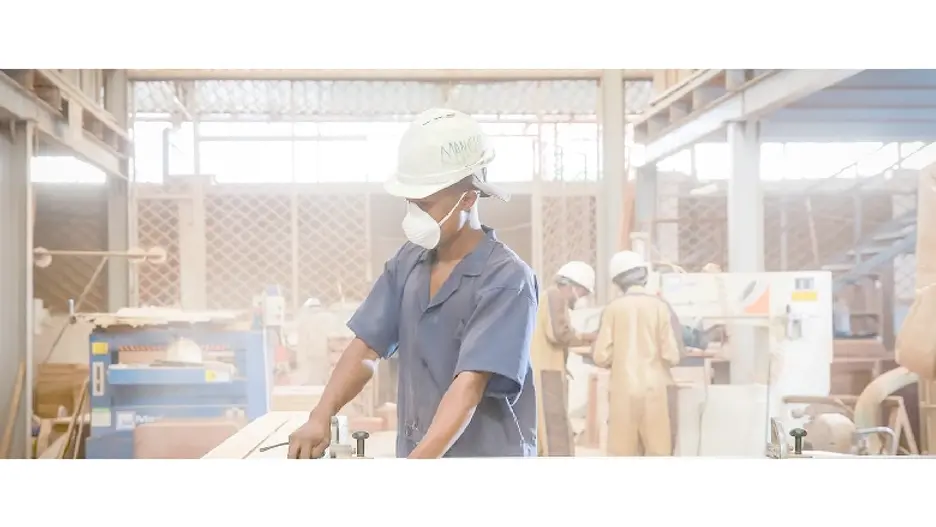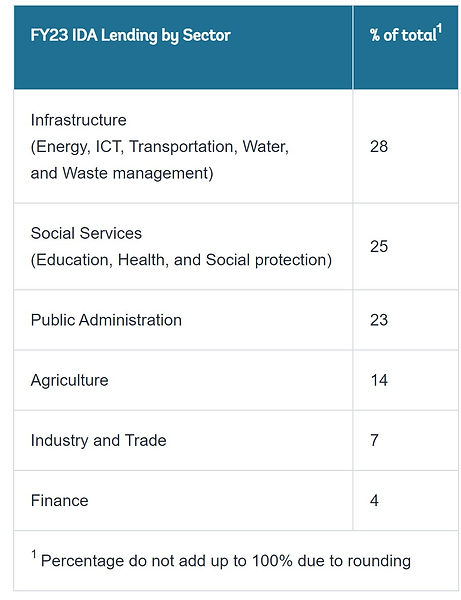

Home / Financing
IDA Financing
IDA funds are allocated to the recipient countries in relation to their income levels and record of success in managing their economies and their ongoing IDA projects. IDA's lending terms are highly concessional, meaning that IDA credits carry no or low interest charges.

For a country to access IDA resources, it must be in a situation of relative poverty as indicated by its per capita income falling below the IDA operational cut-off, $1,335 in FY25, and/or lack creditworthiness for IBRD borrowing. IDA funds are allocated to the recipient countries in relation to their income levels and record of success in managing their economies and their ongoing IDA projects. IDA's lending terms are highly concessional, meaning that IDA credits carry no or low interest charges.

The financing terms for each member country vary based on an annual assessment of the country's GNI per capita, creditworthiness for the International Bank for Reconstruction and Development (IBRD) borrowing, risk of debt distress, and population size. The majority of IDA resources are provided in the form of highly concessional loans (also known as credits) or IDA grants. A portion of IDA resources is offered at non-concessional terms to eligible IDA Recipients. (IDA lending terms)
In the fiscal year ending June 30, 2023, IDA commitments totaled $34.2 billion, of which $7.3 billion in grants. Africa region received 75 percent ($25.8 billion) of the total commitments. Since 1960, IDA has provided $533 billion to 115 countries. Annual commitments have increased steadily and averaged about $36 billion over the last three years (FY21-FY23).
IDA-financed operations address primary education, basic health services, clean water and sanitation, environmental safeguards, business climate improvements, infrastructure and institutional reforms. These projects pave the way toward economic growth, job creation, higher incomes, and better living conditions.
IDA emphasizes broad-based growth, including:
-
Sound economic policies, rural development, private business, and sustainable environmental practices.
-
Investment in people, in education and health, especially in the struggle against HIV/AIDS, malaria, and TB.
-
Expansion of borrower capacity to provide basic services and ensure accountability for public resources.
-
Recovery from civil strife, armed conflict, and natural disaster.
-
Promotion of trade and regional integration.

IDA carries out analytical studies to build the knowledge base that allows intelligent design of policies to reduce poverty. IDA advises governments on ways to broaden the base of economic growth and protect the poor from economic shocks. IDA also helps countries manage their debt and has over the years coordinated debt relief for poor countries. Through a new debt policy called Sustainable Development Finance Policy, IDA is helping countries strengthen debt transparency, debt management, and fiscal sustainability
Last Updated: Sep 23, 2024
Related
Financing Solutions for IDA-Eligible Countries (PDF) - May 2024
Donor Contributions to IDA20 Replenishment (page 9) (PDF)
Donor Contributions to IDA19 Replenishment (PDF)
Donor Contributions to IDA18 Replenishment (pdf)
Donor Contributions to IDA17 Replenishment (pdf)
IDA launches Inaugural Bond, Pioneering New Model for Development Finance - April 17, 2018
International Development Association (IDA) Receives Aaa/AAA Credit Rating - September 22, 2016
IDA Country Allocations:
FY23 (pdf | xslx) | FY22 (pdf | xslx) |FY21 (pdf | xlsx) |FY20 (pdf | xlsx) |FY19 (pdf | xlsx) |FY18 |FY17 |FY16 |FY15 |FY14 |FY13 |FY12
IDA Financial Assistance:
IDA19|IDA18|IDA17|FY15|FY14|FY13|FY12
FY18-24 IDA Commitments by Country and Windows (xlsx)


